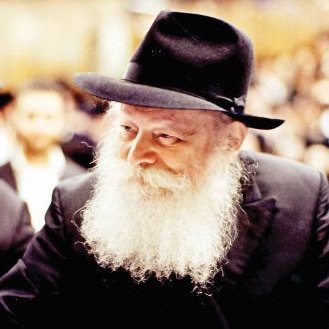News
How the Rebbe offered hope to an ‘orphan’ generation
Taking office so shortly after the end of the Holocaust, the Lubavitcher Rebbe, Rabbi Menachem Mendel Schneerson, played a key role as guardian to a generation of traumatised survivors and orphans.

MIRAH LANGER
“The rebbe began his leadership in 1950, five years after the end of the Holocaust. He inherited a generation of orphans.”
So noted Rabbi Levy Wineberg at a tribute to mark the 25th anniversary of the passing of the rebbe in Sandton last week. Wineberg, the head of a Chabad yeshiva in Pretoria, said that the rebbe had embodied the halacha (religious teaching) about the treatment of others, especially orphans.
“The laws say that although we mustn’t hurt or inflict pain on anybody, we must be especially careful with orphans. Even teachers should treat an orphan differently – guiding them gently and with great compassion over and above anybody else.”
Wineberg said that the halacha defined an orphan as needing such treatment up until the point at which they could fend for themselves. This was the case, he said, when they married and had a family of their own.
“When they have a family, they have links to the future.
“Many [of the Holocaust survivors] were orphans to the extent that they lost everyone that they had. Many were orphans in the sense that they lost their anchor. They lost their contact with their background. They lost their Judaism. The legacy that they had received from Avraham, Yitzchak, and Yaacov was gone. So they were orphaned spiritually. The rebbe took over this generation of orphans, and led them gently and with great compassion.”
At the same time, mused Wineberg, “How did he get us to stop being orphans? He changed the focus from connecting to the past, to connecting to the future.”.
The rebbe had embarked on this mission from “day one” of his leadership. “Literally, at the very first gathering when the rebbe assumed the leadership of Chabad, he said that our generation had to focus on bringing moshiach (the messiah). We are looking to the future.”
Wineberg compared the rebbe’s shift in focus for Jewry to that of deep-sea diving.
Originally, divers in the late 19th century had to be connected to the surface by means of a breathing tube.
“Then, scuba diving was invented – self-contained, underwater breathing apparatus. The scuba diver was able to go under water, and he had with him the means to breathe. Of course, periodically, he had to resurface and fill his tank, but when he went underwater, he could look forward into the water, and not just to his tether to the surface.
“That’s the slogan, the teaching of the rabbi,” said Wineberg.
Wineberg was one of three speakers at the Sandton event, organised by Chabad House and the Lubavitch Foundation.
Earlier, Cindy Polakow spoke about her experience of visiting the Ohel, the site of the rebbe’s grave in New York. “There is a stillness and silence that had an energy of peace and serenity,” she said.
She also spoke about her belief that a letter asking for guidance in an aspect of her life which she had written at the site had come to fruition. In fact, said Polakow, part of the spiritual answer to that letter led to her becoming involved in the Women’s International Zionist Organisation (WIZO) South Africa, where she now serves as an executive committee member.
Polakow concluded her address by quoting the rebbe, a statement which has become a guiding principle in her own life: “If you wait until you find the meaning of life, will there be enough life left to live meaningfully?”
Also paying tribute to the rebbe was cardiologist and University of Witwatersrand Honorary Professor Pinhas Sareli.
“Although I’m a heart specialist, it’s the wrong name. I really deal with the pump that pumps the blood, and that’s what I try to help and diagnose. I don’t know where the heart is. The heart is controlled by Hashem. It’s not a part that is opened to us easily.”
Yet, he said, the rebbe strove to open up that very spiritual space.
“The essence of what the rebbe wanted to achieve was ahavat Yisrael (love for a fellow Jew). And for that he did something that no one has ever done in history: he created an army.”
During his leadership of Chabad, the rebbe sent thousands of emissaries across the world to serve in any place where there were Jewish people.
“It’s an amazing army because the thousands and thousands of people who constitute this army are permanently serving for life. And, there are no questions asked about what you have to do, it’s clear you have to reach this target [of ahavat Yisrael].
Sareli said that the rebbe’s mission was extraordinary in that in sending out these emissaries, “the rebbe was taking a huge risk. He took a haredi group, a very religious group, and threw them into the secular world.”
Yet, the outcome was amazing. “They strive, flourish, expand, and get the rebbe’s concepts established in this environment. [Now, the Chabad community] covers the whole world; it is there to reach every Jewish neshoma [soul]. I think this is the main message that the rabbi has left behind.”